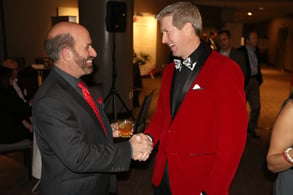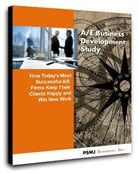 Right or wrong, many clients perceive architecture and engineering firms as equally technically competent.
Right or wrong, many clients perceive architecture and engineering firms as equally technically competent.
Although you may disagree with this perception, it can drive a prospective client’s reality when deciding which firm to work with.
Given this challenge, how can a firm differentiate itself from its competitors (beyond the promises of a facility/solution/end product that will meet the client’s needs)?
A firm’s project delivery process—what it’s like to work with your firm—can be a huge differentiator. The project delivery process encompasses a number of vital areas:
-
Responsiveness
-
Attention to detail
-
How well your firm keeps its word
-
The quality of your firm’s deliverable
The ability to demonstrate that your firm has the client’s overall best interests at heart (versus completing the defined scope on time and within the budget— there’s a big difference!)
But short of a prospective client hiring your firm, how can you convey what it would be like to work with your firm? The answer: the business development process! I’ve always believed that the business development process is a proxy for project delivery. How you respond to and treat your clients and prospects during the business development process speaks volumes for what it would be like to work together on a project.
Your firm’s business development process may be the most important differentiator between your firm and its competitors. It can mean the difference between winning and losing a project! Building relationships and developing business is a very individualistic process (there is no one-size-fits-all recipe that works for everyone). Nevertheless, there are specific strategies (some are attitudinal, while others are skill-based) that your staff can employ, no matter what role they play in the business development process:
-
View the business development process as an opportunity to build a mutually beneficial relationship based on trust, rather than a means to win a project and keep people busy. Respond to all inquiries within 24-48 hours (and if you’re unavailable, make sure someone in your firm is!).
-
If you don’t know the answer to a question, say so and promise that you or a colleague will recontact them shortly— and then follow through! (Admitting that you don’t know the answer to something is extremely difficult for a design professional.)
-
Demonstrate a genuine curiosity for what makes your clients tick, what needs they have, and how your firm can make them more successful.
-
Ask provocative, inquiring, open-ended questions to learn more about your client’s universe. Then (and only then!) provide specific information about your firm and the benefits it provides in the context of their needs.
-
Listen to a client’s questions and responses with “a clean slate”— suspend preconceived notions and solutions.
-
Provide complimentary advice, resources, and/or industry best practices during the business development process. Doing so will demonstrate that you have your client’s best interest at heart (vs. trying to land a job).
-
Stick to your word! If you tell someone you’ll call them or e-mail an article on a particular day, then do so— this is the most basic litmus test for whether you’ll be trustworthy during a project.
-
Don’t go it alone! Exposing potential project team members during the business development process has the dual benefits of demonstrating a collaborative approach and mentoring younger professionals in the art of rainmaking. (Just make sure that there’s no confusion about the primary point of contact.)
In a world where too many A/E firms look and sound the same, the business development process provides the ideal opportunity to build the vital connections and relationships that can give your firm the winning edge.

For more advice on the BD process, check out PSMJ's A/E Business Development Study: How Today’s Most Successful A/E Firms Keep Their Clients Happy and Win New Work, In this study, we asked a range of questions relating to firms’ business development efforts, including: If firms have a full-time business development staff and how it functions, and how they train their full-time business development staff. Then we overlaid that data against firms’ financial performance, proposal performance, and client satisfaction, i.e. their business development effectiveness.



